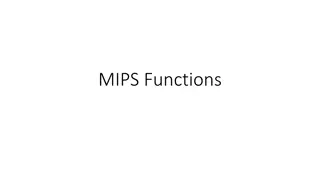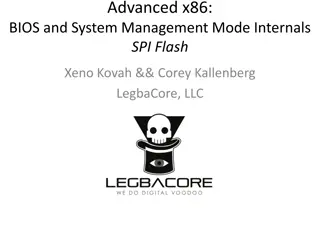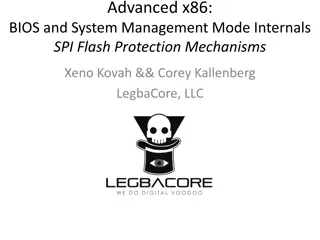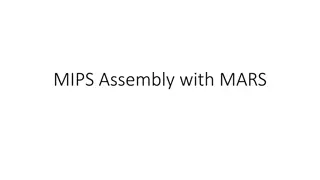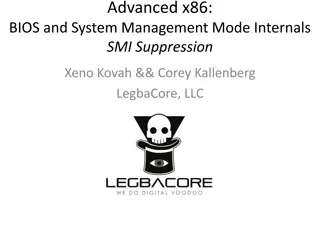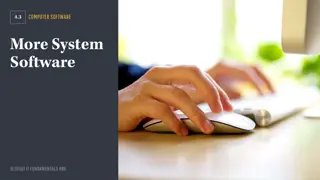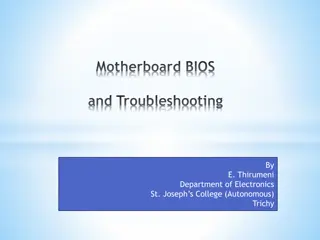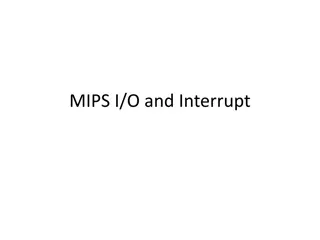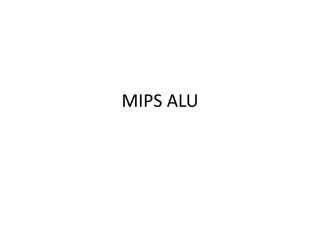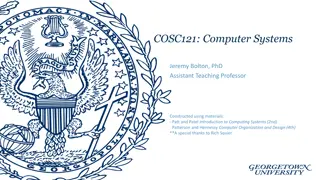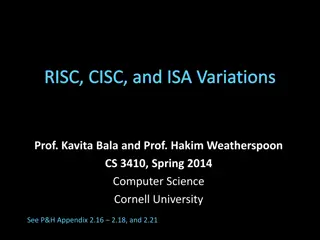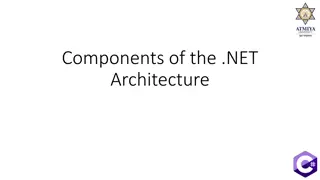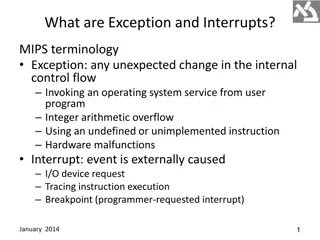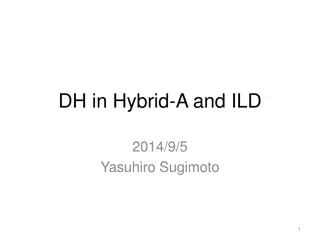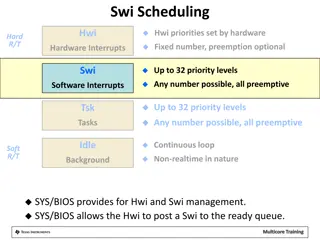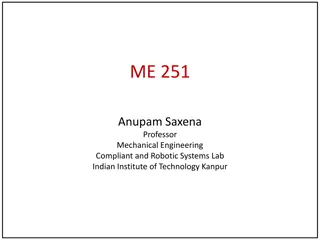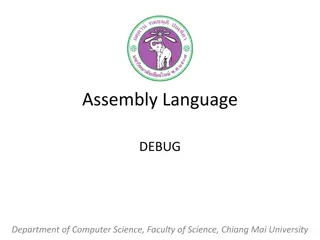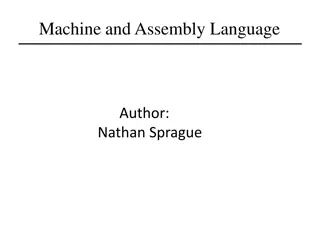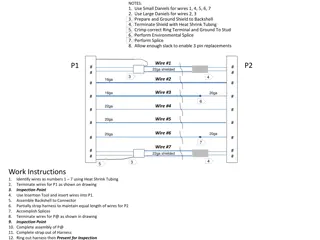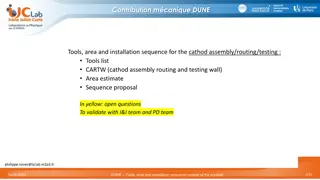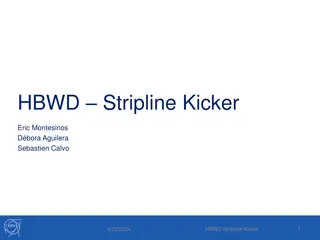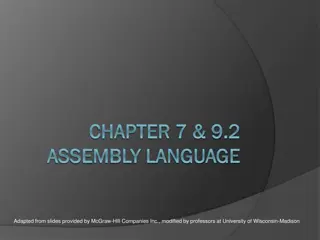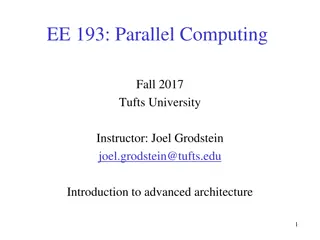Understanding Computer Architecture: Exploring MIPs, Assembly Code, and BIOS Functions
Dive into the world of computer architecture with a focus on MIPs assembly language, basic program formats, BIOS functions, and system calls. Learn about the role of the OS kernel, memory addresses, and control flow in executing programs efficiently.
Download Presentation

Please find below an Image/Link to download the presentation.
The content on the website is provided AS IS for your information and personal use only. It may not be sold, licensed, or shared on other websites without obtaining consent from the author. Download presentation by click this link. If you encounter any issues during the download, it is possible that the publisher has removed the file from their server.
E N D
Presentation Transcript
Week 5 Computers are like Old Testament gods; lots of rules and no mercy. Joseph Campbell 1
MIPs Assembler Like most High Level Languages, assembly uses much of the same practices. Enter text as Assembly Code Assemble the code producing machine code Run the machine code. 2
Basic program format data Variables are declared here text Code goes here 3
Basic Program #This is where variable definitions go .data theSolution: .word 42 #in decimal #This is where code goes .text Main: lw $t0,theSolution #load value stored at address addi $t0,$t0, 3 #add 3 onto 42 move $a0, $t0 li $v0, 1 syscall li $v0, 10 syscall #output our value # Systemcall code exit 4
Basic Program All labels are denoted as: someVariableName: All of these can be viewed as memory addresses. These are sometimes referred to as symbolic addresses The Assembler will use these to: Reference memory location Control program flow 5
BIOS functions Basic Input Output System All cpu architectures have one, just the name may be different. X86 it is called the BIOS Recall your PC has a BIOS MIPs refers to it as the firmware routines BIOS routines are drivers located in the firmware which interface the OS to the hardware. The OS has access to these, but are protected from user programs. User software can access these OS routines which access the firmware by making system calls to the OS. To protect these subroutines, the OS switches to Kernel Mode. 6
OS Kernel Figure to the right shows a typical system. The kernel is viewed as the green and purple sections. To get to any functionality you must go through protected system calls 7
Typical BIOS routine example User programs will load specific registers with output data, service #. Issue a syscall. OS determines what type of syscall, and processes the data accordingly. When complete, control returns to the user program. 8
Sys Calls MIPs has 17 standard system calls. MARS simulator has extended system calls. 9
Load and Store Word 40% of all instructions will load and store data to/from the registers. Lw $t0, some_label Get the contents of memory address some_label and place it into register $t0. At times it may be convenient to have the data address in the register Lw $t0, ($t1) ($t1) indicates that the contents of $t1 is an address and should be treated as such. This implies that addresses can be contained in registers and are thus susceptible to arithmetic operations. This allows for dynamic addressing control. La $t0, some_label Loads the some_label address into a register. Store instructions will work the same way Sw $t0, some_label -- in this case the contents of $t0 is placed into memory at some_label Sw $t0, ($t1) - has a similar effect. 10
Hello World Strings can be defined as being null terminated or not. .asciiz is null terminated. La $a0, msg will load the base address of msg into $a0 for the syscall Syscall will output the entire message upto the null character at the end of the string. 11
Hello World!. Stored in memory as a series of bytes. Note the low byte of each word is on the right. Null terminator is a 0. String terminator. 12
Hello World! Note what happens when we remove the terminator from the first string. 13
Byte Addressable Memory MIPs uses byte addressable memory. Each address refers to a unique byte in memory. Words are collections of 4 bytes, and reside on addresses exactly divisible by 4. First 3 lines can be reduced to: lb $t1, msg + 4 14
Simple Arithmetic Variables x and y are defined and given 4 bytes of space in memory. Result is placed in x which appears first in the .data section, see below. 15
End 16



